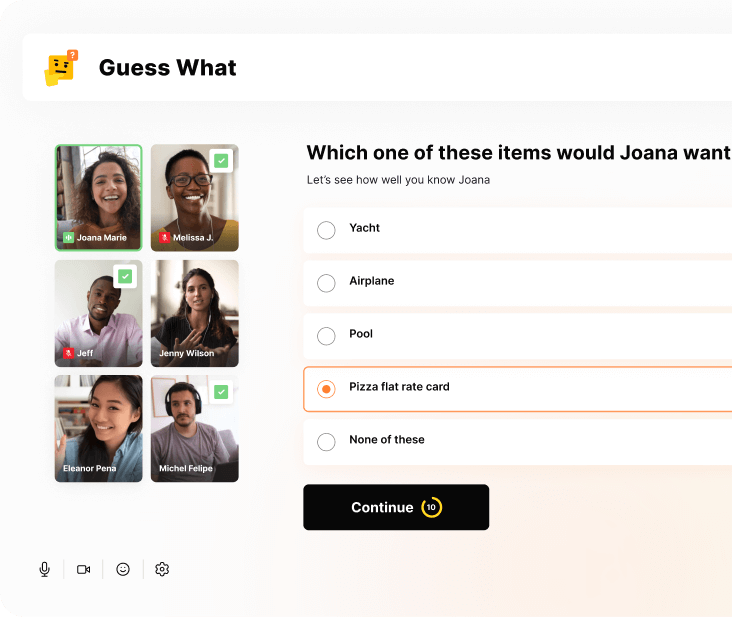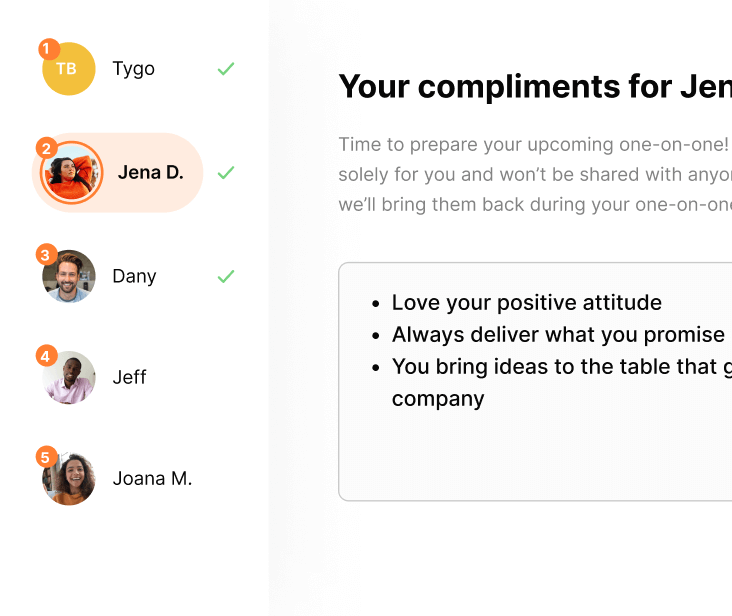Back to Blog
How to calculate the cost of employee turnover (+tips to reduce it)
Did you know the average US company spends $4,000 to hire a new employee? This doesn't include the additional costs that come from the average 24 days it takes to fill the position or the hit to productivity due to lowered team morale.
Many factors contribute to the cost of employee turnover, including
- talent acquisition,
- compensation,
- and loss of productivity
Understanding these factors and how they influence the cost of employee turnover is essential Don’t let your business suffer from high employee turnover rates — here's how to calculate the cost of employee turnover.
How to calculate turnover cost: step-by-step
If the sound of formulas, data, and calculators make you grimace, we've got some good news and some bad news. Let's start with the bad — there's no way around it, you'll have to do some number-crunching, and it can get pretty complicated.
Ready for the good news? We've done all the research for you and broken it down into simple steps to make the task as painless as possible. So break out your calculator — or better yet, open up a spreadsheet — and see what employee turnover is costing your business.
Step 1: Itemize your list of turnover costs
More goes into the costs of employee turnover than just the price of a job post ad. There are two kinds of turnover costs: indirect and direct.
Direct turnover costs are typically easier to calculate, so consider starting here. Direct costs include things like
- Leaving costs: Exit interviews, severance pay, and continuation of benefits can add up quickly.
- Talent acquisition: The cost of finding new talent, including the fees for advertising, recruitment agencies, and pre-employment tests, is high.
- Transition costs: On top of signing bonuses and relocation expenses, there are benefits enrollment and administrative costs, as well as training costs and supply accommodations.
Indirect turnover costs are more difficult to calculate because they’re hard to measure. Indirect costs include
- Lost productivity: Not only do you lose the sales, knowledge production, and progress of the prior employee, but you decrease the productivity of the colleagues temporarily filling the role.
- Productivity growth period: It takes a new employee 60-90 days to reach full productivity, during which time you're still paying their salary in full.
Share fun facts and bond with a team quiz
Have your participants choose from a list of questions they’d like their coworkers to answer about them, before watching as they guess the right answer.
01. Yes
share-fun-facts-and-bond-with-a-team-quiz

Run a guided recognition activity
Have your participants choose from a list of questions they’d like their coworkers to answer about them, before watching as they guess the right answer.
01. Yes
run-a-guided-recognition-activity

Organize a virtual cooking class
Hire a professional chef to help your team cook a delicious lunch or dinner. May be difficult for co-workers with families. To find providers and get tips, read our blog about virtual cooking classes.
02. No
organize-a-virtual-cooking-class

Hire a stand-up comedian
Have your participants choose from a list of questions they’d like their coworkers to answer about them, before watching as they guess the right answer.
02. No
hire-a-stand-up-comedian

No items found
No items found
Table of contents
Did you know the average US company spends $4,000 to hire a new employee? This doesn't include the additional costs that come from the average 24 days it takes to fill the position or the hit to productivity due to lowered team morale.
Many factors contribute to the cost of employee turnover, including
- talent acquisition,
- compensation,
- and loss of productivity
Understanding these factors and how they influence the cost of employee turnover is essential Don’t let your business suffer from high employee turnover rates — here's how to calculate the cost of employee turnover.
How to calculate turnover cost: step-by-step
If the sound of formulas, data, and calculators make you grimace, we've got some good news and some bad news. Let's start with the bad — there's no way around it, you'll have to do some number-crunching, and it can get pretty complicated.
Ready for the good news? We've done all the research for you and broken it down into simple steps to make the task as painless as possible. So break out your calculator — or better yet, open up a spreadsheet — and see what employee turnover is costing your business.
Step 1: Itemize your list of turnover costs
More goes into the costs of employee turnover than just the price of a job post ad. There are two kinds of turnover costs: indirect and direct.
Direct turnover costs are typically easier to calculate, so consider starting here. Direct costs include things like
- Leaving costs: Exit interviews, severance pay, and continuation of benefits can add up quickly.
- Talent acquisition: The cost of finding new talent, including the fees for advertising, recruitment agencies, and pre-employment tests, is high.
- Transition costs: On top of signing bonuses and relocation expenses, there are benefits enrollment and administrative costs, as well as training costs and supply accommodations.
Indirect turnover costs are more difficult to calculate because they’re hard to measure. Indirect costs include
- Lost productivity: Not only do you lose the sales, knowledge production, and progress of the prior employee, but you decrease the productivity of the colleagues temporarily filling the role.
- Productivity growth period: It takes a new employee 60-90 days to reach full productivity, during which time you're still paying their salary in full.
Step 2: Determine the amount of each item
Now that you have an idea of the factors that influence the cost of employee turnover, you need to determine how much each one costs your company. How do you do that? This is where you'll need to roll up your sleeves and do some digging.
As a starting point, list which processes within your company correlate with each cost and look for the corresponding data. Your list might look like this:
Once this data is gathered, you'll need to find the totals for each factor. For some elements, this is simple — just add the costs together. For example, if you've reviewed reports and know the company paid $1,875 in severance pay and the new hire's salary is $10,000 higher annually, then your compensation costs for that turnover are $11,875.
For other factors, it's a bit more tricky. Thankfully there are some handy formulas you can use to calculate the total cost of each factor.
Talent acquisition:

For example, if the company spends $3,348 for an annual subscription to a job board, $75 per new hire for a background check, $3,600 annually for pre-employment testing software, an internal recruiting/hiring an employee with a $35,000 annual salary, and had nine new employees over a year period, the formula would look like this:
($3,348 + $225 +$3,600 +$35,000) / 9 = $4,685.89
Therefore, you could assume the estimated cost per hire at your company is $4,686.
Lost productivity:

For example, if an employee with 230 working days per year has an annual target of $75,000 in sales, and it takes 45 days to fill their position, the formula would look like this:
($75,000 / 230) x 45 = $14673.91
So, you could assume the estimated cost of the temporary productivity loss for that position was $14,674.
Step 3: Calculate your final cost
The last step is easy — now that you have your estimated costs for each factor, just add them all together to get your total cost of employee turnover. In our examples above, the company's total cost of employee turnover would be $43,022 ($14,674 talent acquisition + $14,674 compensation + $14,674 productivity loss).
Your company's actual turnover costs may vary greatly, but these calculations are a good starting point for measuring turnover costs and developing employee engagement solutions to reduce turnover.
5 essential tips for reducing the cost of employee turnover
Now that you know how to calculate the cost of employee turnover, you can start taking steps to reduce it. And the work is worth the effort — Work Institute's 2021 Retention Report found that about two-thirds of voluntary turnovers were due to "preventable" factors, like management, rewards, career, and job performance.
The following tips will help you reduce your turnover costs:
1. Use an employee engagement platform
An employee engagement platform is a powerful tool to combat turnover. With Gomada, you can improve employee engagement and connect with your team using research-based relationship-building programs. The more engaged employees are, the longer they will stay with an organization (up to 43% less turnover! ), which reduces turnover costs.
2. Create a positive work environment
According to a Deloitte report, 94% of executives and 88% of employees believe a distinct workplace culture is important to business success. Make your company a place people want to work by developing a positive work environment where employees feel valued, respected, and like they're part of a team.
3. Invest in employee development
Encouraging employee growth is essential — 63% of workers who quit a job in 2021 cited no opportunities for advancement as their main reason. By providing employees with opportunities to grow and learn, you can increase their satisfaction and likelihood of sticking around.
4. Encourage open communication
Make sure employees feel comfortable speaking up about their needs and concerns. Hold regular one-on-one meetings, or host virtual team building activities with Gomada to get everyone talking. Open communication can help you identify and address issues before they lead to turnover.
5. Show appreciation for employees
A little recognition can go a long way in making employees feel valued and appreciated. Recent employee engagement statistics show 69% of employees believe they'd work harder if they felt more appreciated. Whether it's a shout-out during a meeting, an annual award, or kudos on a fun employee engagement app, showing your team that you appreciate their hard work is essential.
Subscribe to get our latest updates
Subscribe to get our latest updates
.webp)



.jpg)

.jpg)